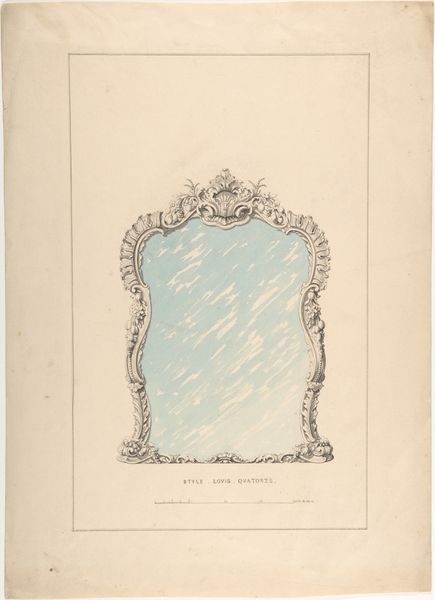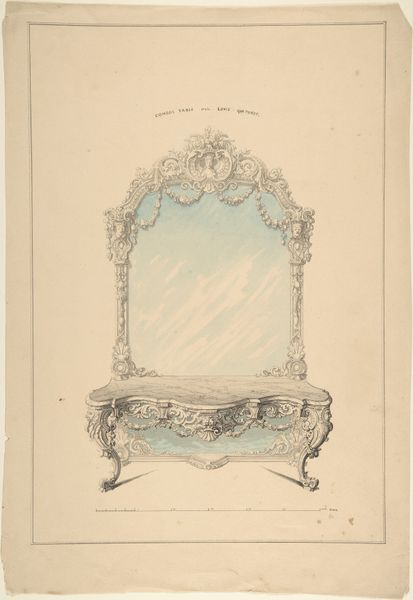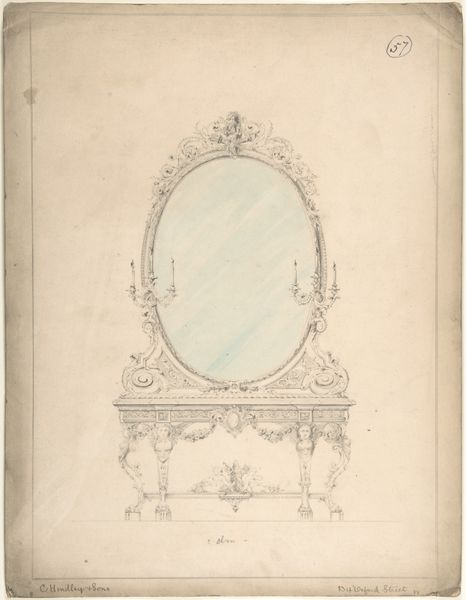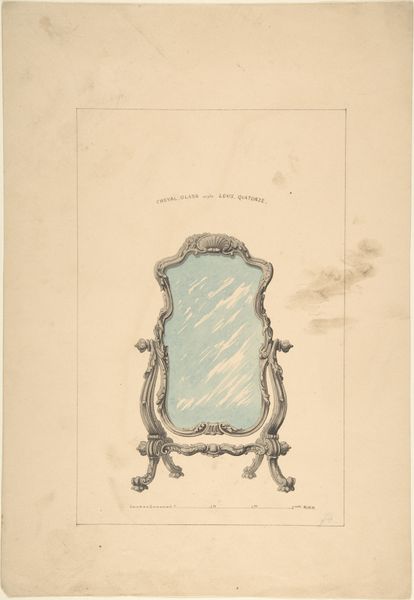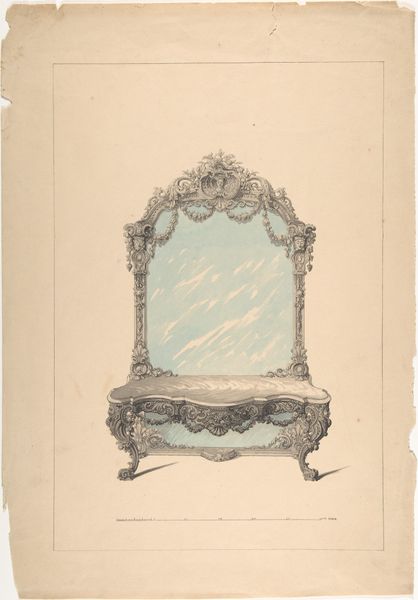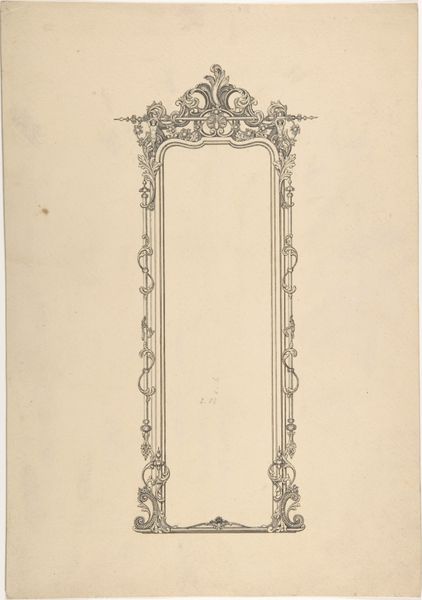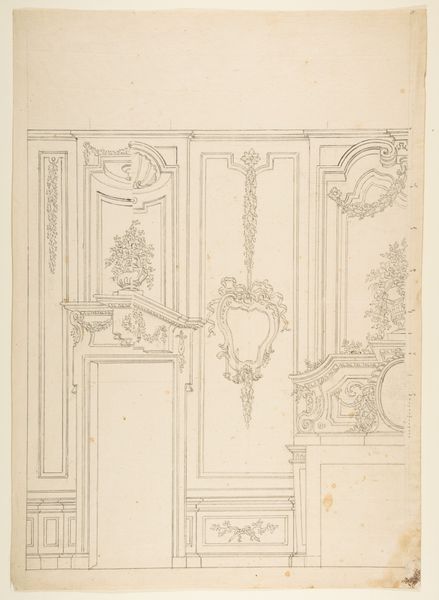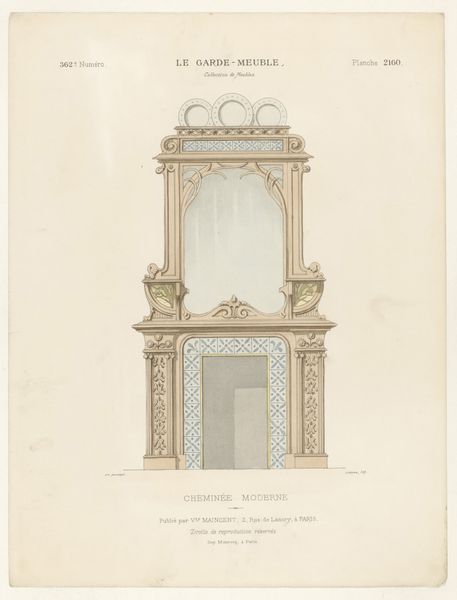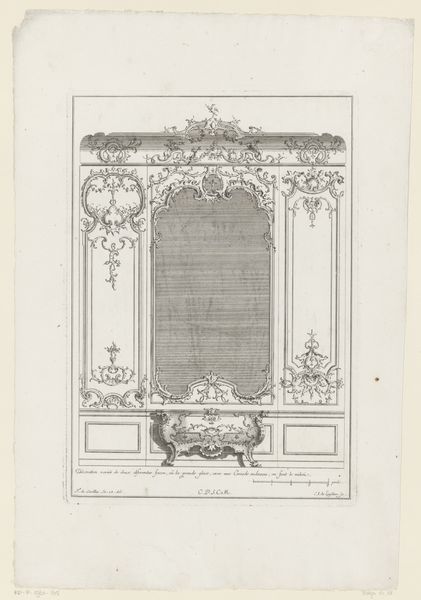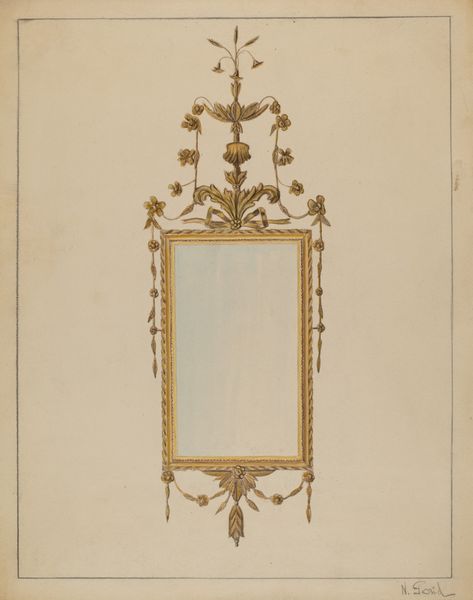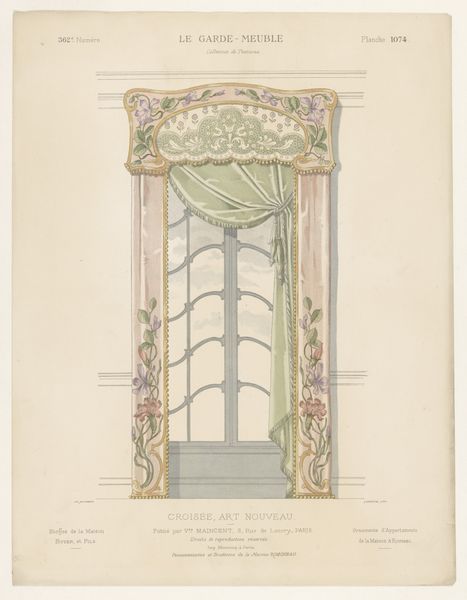
drawing, print, etching
#
drawing
# print
#
etching
#
etching
#
classicism
#
history-painting
#
decorative-art
Copyright: Public Domain
Curator: Before us, we have "Pier Glass", an etching attributed to Robert William Hume and dated between 1850 and 1904. It's currently held here at the Metropolitan Museum of Art. Editor: The frame steals the show, doesn’t it? All those rococo curls and crests—almost obscuring the pale blue, hazy emptiness that stands in for the mirror. There’s a melancholic air to this, a quiet fading grandeur. Curator: Yes, the Rococo Revival is definitely on display. The elaborate ornamentation is interesting – notice the repetition of shell motifs and foliate scrolls. These were intentionally deployed in 19th-century decorative arts to recall a pre-industrial aesthetic, a nostalgic view of handcrafted elegance. Editor: Absolutely. And the etching itself, as a medium, lends to that air of replication and historical reflection. I'm wondering, what space was this sort of mirror meant to inhabit? Curator: It's meant to capture and extend light in dimly lit spaces, offering both decoration and the semblance of expanded space, particularly popular within aristocratic domestic interiors of the 18th and 19th centuries. A symbol of opulence. Editor: And mirrors have always been powerful symbols! Seeing one’s own reflection, confronting one’s image—that’s potent stuff. The ornate frame, perhaps, was there to soften the confrontation? To present a pleasing, controlled version of oneself? It does strike me that who had access to them and to their own reflected image then became a privilege. Curator: Indeed, mirrors, and reflections, more broadly represent ideas about identity, vanity, and perception throughout centuries of visual art. They remind us about what societies value. The frame enhances and even dictates these values through controlled artifice. Editor: Right, even this representation of the "Pier Glass," this printed image, filters and shapes our access to it now. Considering all the historical baggage around such objects—who owns the means of seeing and being seen—this piece resonates with broader questions of social and aesthetic power. Curator: That is well put. The image lingers with echoes of power and visual manipulation, not just beauty. Editor: Yes, there's far more than meets the eye here. Thank you for helping me reflect on that.
Comments
No comments
Be the first to comment and join the conversation on the ultimate creative platform.
